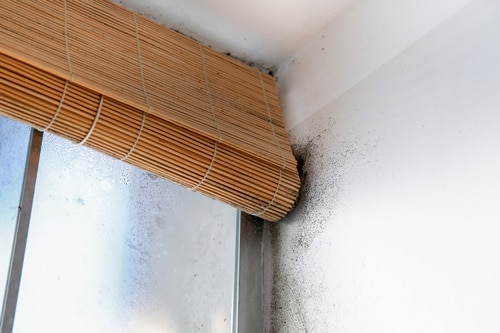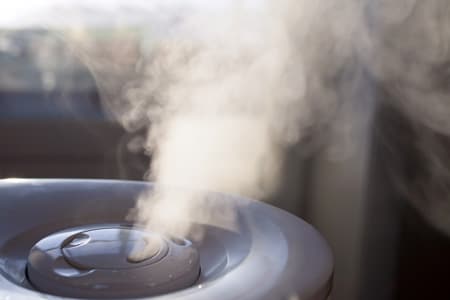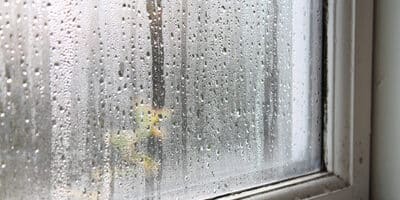
During summer you may have noticed that the relative humidity in your home is higher than in winter.
Relative humidity refers to the amount of water vapor in the air. It is a percentage of how much moisture the air could hold at the given temperature. Warm air retains more moisture while cooler air retains less, this is the reason why the air is more humid in summer than in winter.
Along with skin and respiratory issues, incorrect humidity levels can also wreak havoc with the structure, safety, and appearance of your home. Whether it’s maintaining your property or your health, out of control humidity levels can put a serious dent in your wallet.
So what is the most comfortable humidity level for your home in summer? According to the Environmental Protection Agency (EPA), indoor humidity levels should be kept below 60 percent relative humidity and ideally between 30 and 50 percent.
It’s easy to measure the levels in your home, by using a hygrometer. A hygrometer is a small gadget that measures the relative humidity level and temperature quickly and easily.
In this article, we’ll walk you through some of the problems you may experience with high humidity, what levels are considered ideal and various solutions to manage the humidity levels in your home.
First up, let’s explore some of the problems that high levels of humidity in summer can cause.
What Problems Can I Expect from High Humidity Levels at Home?
Air that is too humid can cause several problems, affecting not only your personal comfort and health but also the safety of your home.
Here are just some of the problems that excessive levels can cause:
Health Issues Caused by High Humidity
High levels can cause discomfort for most people, particularly during summer.
When it’s hot, your body tries to cool itself naturally through sweating. However, when it’s humid out, the environment interferes with this cooling process as our sweat does not evaporate easily in humid weather. You end up sweating more as your body’s natural cooling process can’t work efficiently—which is not only uncomfortable (and unsightly) but can lead to dehydration if you don’t drink a lot of water.
This excessive sweating can also trigger skin conditions such as heat rash, itchiness and excessive bacteria growth on the skin.
High humidity levels in your home can also encourage the growth of mold and bacteria. Mold spores can cause health issues, including various respiratory ailments. When it’s humid, it also creates the perfect breeding ground for dust mites which can lead to problems for people living with Asthma and people who have allergies.
Damage to Property Caused by High Humidity

Excess moisture in your home can lead to damage and promote harmful mold growth.
The damage caused by it being too humid isn’t limited only to your health, it can also damage your home and its contents.
Just some of the damage an excessively humid environment can cause to your property includes:
- Wallpaper and paint peeling.
- Wood expansion that causes windows and doors to stick.
- Mold growth that can compromise structural integrity and damage furniture.
- Bacteria growth which can cause unpleasant odors.
To avoid these common problems related to excess humidity, it’s essential to strike the right balance inside your home.
How to Reduce Humidity Levels at Home in Summer
Getting your humidity at home just right can be a bit of a balancing act. We know high humidity levels can cause a range of issues, so it’s important to keep your indoor humidity under control. As we’ve covered earlier, you should aim for somewhere in the middle of the EPA’s recommended range of 30-50% relative humidity. So, keep reading to find out how to reduce humidity in your house if it gets out of control in the summer.
Try Opening a Window
The cheapest way to try and dehumidify your home is to open a window or two and let the air in your home circulate. If it’s particularly humid, you can try using a fan to push the air out of the window, just like how an exhaust fan in a bathroom works.
You also have to remember that appliances like clothes dryers can spike how humid the air inside your home is, so either air dry your clothes outside or make sure you keep a window open while using a dryer.
The problem with trying to dehumidify your home by opening windows is that if the humidity level outside is higher or the same as the level inside your home then it won’t work.
You also have to bear in mind that opening a window may increase the temperature inside and could cause you more discomfort from the extra heat.
Use a Dehumidifier
Dehumidifiers are designed to soak up excess moisture from the air, making them a good way to lower humidity levels in your home for a more comfortable and healthy living space.
They work by moving air over refrigerated coils, which draw moisture from the air and drip it into a tank. You may only need to use a dehumidifier in certain areas in your home, such as basements, storage spaces, and laundry rooms, to moderate humidity in these moisture-rich environments.
Doesn’t My Air Conditioner Dehumidify the Air?
Yes, an air conditioner is one way to dehumidify the air in your home and it can be a very effective solution. However, the most significant caveat is that an air conditioner is not designed to maintain a balanced ambient humidity level, and in fact can dry out the air too much if used for prolonged periods.
If you’ve spent any time working in an air-conditioned workspace, or if you run your HVAC unit around the clock at home during summer, you will have most likely experienced the effects of low humidity.
If you notice:
- Your skin and eyes getting dry and irritated
- Your allergies are more inflamed than usual
- Your sinuses are under attack—leaving your nose dry and cracked
Then it’s not humid enough.
So if it’s too humid without an air conditioner, but AC units can also dry out the air too much, then what’s the solution?
Using A Humidifier In Summer

Use a humidifier in summer when your air conditioner is removing too much moisture from the air.
Running a humidifier alongside your air conditioner during the summer months gives you the best of both worlds. The air conditioner will keep the temperature stable and at a comfortable level, while the humidifier will help maintain the perfect level of humidity inside your home.
Using a cool mist humidifier over summer can help increase humidity without heating up the room. Not only are these models cheaper and safer than warm mist humidifiers they are also far more suitable for use in hotter temperatures.
If you opt for a cool mist humidifier, daily cleaning is essential for healthy air quality. Make sure you don’t leave the water in the device for more than 24 hours. If you fail to maintain and clean your humidifier regularly, it can become a source of mold. If you can see mold inside the unit, you will need to check out our guide to learn how to clean a humidifier with mold.
While it might seem counterintuitive, summer is no time at all to pack away the humidifier. If your air conditioner is drying out the air in your house in the summer months, and you need to add humidity back into your home, then a humidifier is the ideal solution to maintain a comfortable and safe indoor humidity level.
If you need help choosing a humidifier for your home, check out our comprehensive buyer's guide on the best large room humidifiers to make sure you purchase the perfect model for a healthy and happy home.
A diffuser is also a great way to freshen up a room with a therapeutic aroma and increase the humidity. Read our guide on the best essential oil diffusers for large spaces to see the powerful models that will diffuse essential oils and humidify the air.




